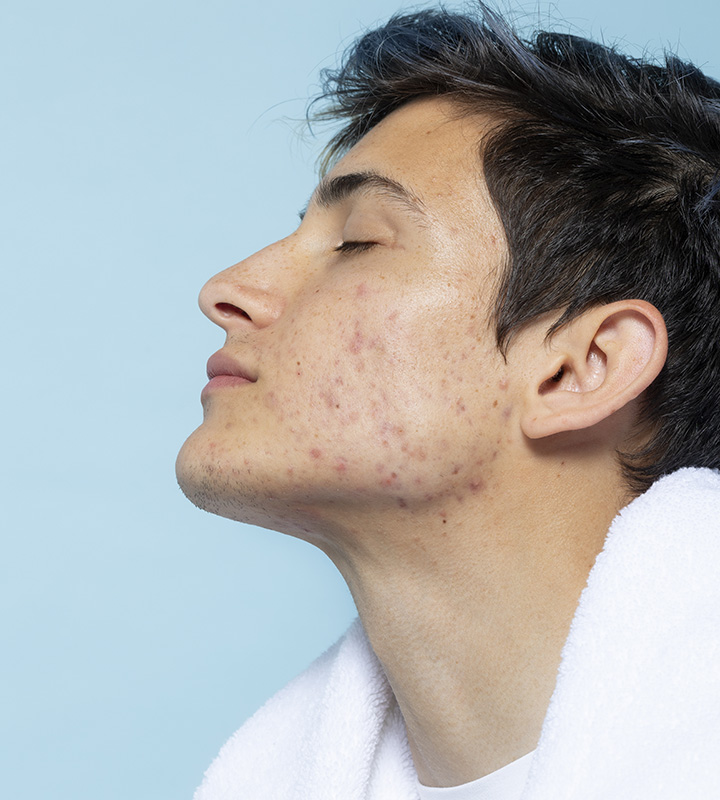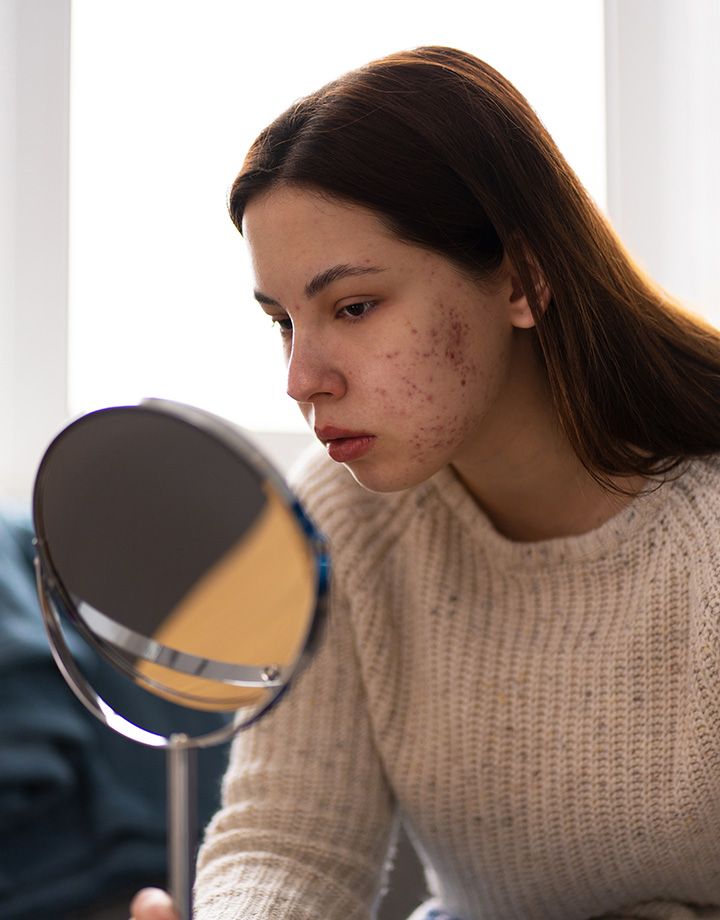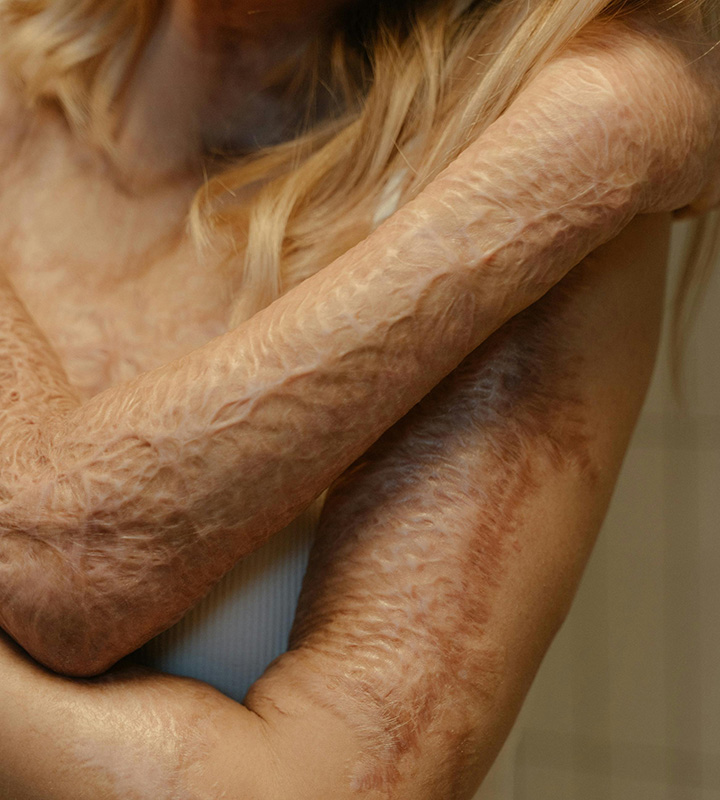Bid goodbye to dark circles with these under eye creams!
Do you want to ditch those big panda eyes? Know a compilation of the best under eye creams in India to treat the stubborn dark circles.
Scars are a testament to the body’s remarkable ability to heal itself, but their formation is a complex process influenced by various factors. Here, we delve into five key reasons why scars form.
Scars are a natural consequence of the body’s intricate wound healing mechanism. When the skin is injured, the body initiates a cascade of processes to repair and regenerate damaged tissue.
This involves the activation of various cells and the release of signaling molecules, ultimately leading to the formation of scar tissue.

Collagen, a crucial protein for maintaining skin structure, plays a central role in scar formation. During the healing process, the body produces collagen to mend the wounded area.
However, the arrangement of collagen fibers in the scar tissue differs from the original skin, resulting in a visible mark. The composition and alignment of collagen contribute to the unique texture and appearance of scars.
The depth and nature of the wound significantly influence scar formation. Deeper wounds, especially those penetrating into the dermal layer of the skin, often lead to more noticeable scars.
The body’s response to injury varies based on the severity and location of the wound, impacting the final outcome of the healing process.
Genetics play a role in how an individual’s body responds to injury. Certain genetic factors can influence the healing process, affecting the propensity to form scars.
Some people may be more prone to hypertrophic or keloid scars due to their genetic makeup, while others may exhibit a less prominent scarring response.
Inflammation is a crucial part of the body’s defense against injury, but excessive or prolonged inflammation can contribute to scar formation.
Inflammatory processes during healing can lead to the deposition of excess collagen and alterations in tissue structure, influencing the final appearance of the scar.
Managing inflammation effectively during the early stages of healing may help minimize scar formation.
Understanding these factors provides insight into the intricacies of scar formation. Scars are a natural part of the healing process.
But, advancements in medical research continue to explore ways to optimize wound healing and minimize the impact of scars on both physical and emotional well-being.
Scars, often lingering reminders of past wounds, need not be permanent blemishes on our skin. Embracing the healing power of nature, here are ten natural remedies that may aid in minimizing the appearance of old scars.

Known for its soothing properties, aloe vera has been a staple in skincare for centuries. Applying aloe vera gel directly to the scar can help moisturize and promote tissue regeneration.
Rich in antioxidants and fatty acids, coconut oil possesses excellent moisturizing properties. Regularly massaging coconut oil onto scars may contribute to improved skin elasticity and fading of scars over time.
Applying vitamin E oil or breaking open a vitamin E capsule onto scars can help nourish the skin. Vitamin E is believed to support collagen production, aiding in scar healing and reducing their visibility.
With its natural antibacterial properties, honey can be applied topically to scars to promote healing. Its moisturizing effect can also contribute to a more supple and less noticeable scar over time.
Rich in vitamin C, lemon juice may help lighten scars. Dilute lemon juice with water, apply it to the scar, and avoid exposure to sunlight to prevent skin sensitivity.
This oil is renowned for its regenerative properties. Packed with vitamins, antioxidants, and essential fatty acids, rosehip seed oil can aid in repairing damaged skin and minimizing the appearance of scars.
Lavender oil’s anti-inflammatory and antiseptic qualities make it a potential ally in scar reduction. Dilute a few drops with a carrier oil and gently massage onto scars.
The hydrating and cooling properties of cucumber make it a refreshing option for scar care. Apply cucumber slices or cucumber juice to scars for a soothing effect.
Studies suggest that onion extract may help improve the appearance of scars. Available in gel form, it can be applied topically to support collagen production and reduce scar visibility.
Known for its anti-inflammatory properties, turmeric may assist in scar healing. Create a paste with turmeric and water or oil and apply it to the scar, leaving it on for about 15 minutes before rinsing.
While these natural remedies offer potential benefits, individual responses may vary. It’s advisable to perform a patch test, especially if you have sensitive skin, and consult with a healthcare professional for personalized advice.
Combining these remedies with a healthy lifestyle, proper hydration, and sun protection can contribute to the overall health and resilience of your skin.
In the dynamic world of cosmetic procedures, advancements continue to redefine the possibilities for scar revision. Whether caused by injuries, surgeries, or acne, old scars need not be permanent fixtures.

Here are 7 modern cosmetic procedures that harness cutting-edge technologies to help heal and improve the appearance of old scars.
Laser technology has revolutionized scar treatment. Different laser types, such as fractional lasers or intense pulsed light (IPL), target specific layers of the skin to stimulate collagen production, promoting smoother and more even skin texture.
Laser therapy is effective for various types of scars, including surgical scars and acne scars.
Microdermabrasion is a non-invasive procedure that involves exfoliating the skin’s outer layer. This process helps diminish the appearance of scars by removing damaged skin cells and stimulating collagen production.
It’s particularly useful for superficial scars and can be performed in a dermatologist’s office.
Chemical peels involve the application of a chemical solution to the skin, leading to controlled exfoliation. This process encourages the growth of new, healthier skin cells, minimizing the appearance of scars.
Chemical peels are effective for addressing surface-level scars and can be tailored to different skin types and concerns.
For certain types of scars, dermal fillers can provide a temporary yet effective solution. Fillers containing hyaluronic acid or other biocompatible materials can plump up depressed scars, creating a smoother skin surface.
This approach is particularly beneficial for atrophic or indented scars.
Subcision is a surgical technique used to treat tethered scars, such as acne scars. During the procedure, a needle is inserted beneath the scar tissue to break up fibrous bands, allowing the skin to elevate and appear more even.
Subcision is often combined with other scar revision procedures for optimal results.
Microneedling involves the use of tiny needles to create controlled micro-injuries in the skin. This stimulates the body’s natural healing response, promoting collagen production and improving the texture of scars.
Microneedling is versatile and suitable for various scar types.
Radiofrequency (RF) therapy employs energy waves to heat the deeper layers of the skin, promoting collagen synthesis.
This procedure is effective for improving skin laxity and texture, making it a valuable option for scar revision. RF therapy is often used in combination with other treatments for comprehensive results.
Before opting for any cosmetic procedure, it’s crucial to consult with a qualified healthcare professional or dermatologist.
Each individual’s skin type, scar characteristics, and medical history can influence the choice of the most suitable treatment. With these modern cosmetic procedures, individuals now have a range of options to address old scars and enhance their skin’s natural beauty.
In the realm of natural remedies, the humble potato has emerged as a subject of interest for its purported ability to aid in scar healing.

Several studies have delved into the properties of potatoes and their potential benefits in minimizing the appearance of old scars. Let’s explore the scientific findings that shed light on this unconventional remedy.
The research suggested that compounds found in potatoes, such as polyphenols and antioxidants, contribute to an accelerated wound healing process. This initial evidence paved the way for further exploration into the effects of potatoes on scar tissue.
The findings indicated that the anti-inflammatory components in potatoes may help reduce inflammation in scar tissue, potentially contributing to a less prominent appearance.
The study observed a measurable reduction in scar pigmentation and texture in a significant number of participants. The researchers attributed these positive outcomes to the natural enzymes and vitamins present in potatoes.
The results suggested that potato starch may stimulate collagen production, potentially aiding in the regeneration of healthier skin tissue.
The research suggested that the antioxidants in potatoes may contribute to protecting skin cells from oxidative stress, thereby promoting a favorable environment for scar healing.
An experiment conducted by a dermatological research group explored the application of potato enzyme extracts on scar tissue.
The results hinted at potential improvements in scar texture, with the enzymes possibly influencing the breakdown of scar tissue.
These formulations aim to harness the beneficial compounds found in potatoes to create targeted solutions for scar reduction. Preliminary findings suggest promising results in terms of improved scar appearance.
While these studies provide intriguing insights into the potential of potatoes for scar healing, it’s important to approach such findings with a degree of caution.
Further research, including larger clinical trials and rigorous scientific scrutiny, is needed to establish the efficacy of potatoes as a reliable and standardized treatment for old scars.
Always consult with a healthcare professional before incorporating any home remedy into a scar management routine, especially if the scar is associated with a medical condition or recent surgery.